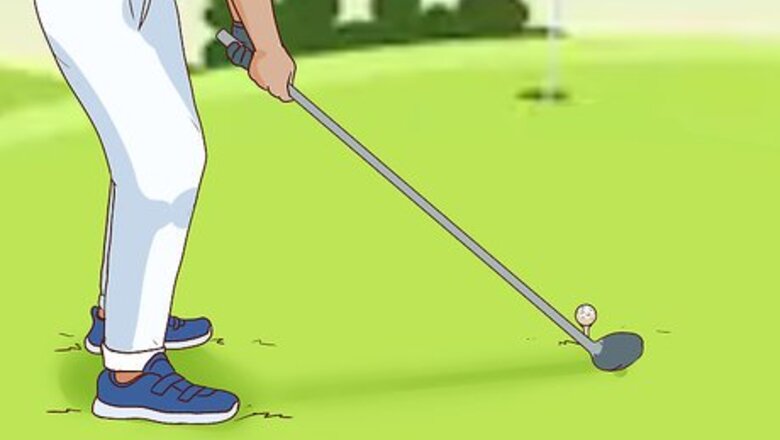
views
Altering Your Setup
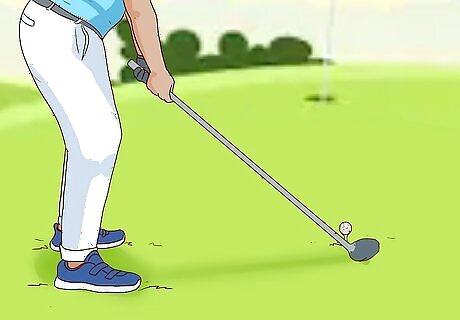
Place the ball in front of the inside of your front foot. Striking the ball on the downswing is one common cause of a slice. If you position your ball in front of the inside of your front foot, you’ll be more likely to hit it on your upswing, which will help the ball fly straight instead of curving to the right. The length of your club will determine how far you should stand from the ball. With the head of the club right behind the ball, stand so that the end of the club’s handle is approximately 6 inches (15 cm) in front of the inside of your left thigh. Avoid placing the ball too far forward, as well. This can also be a cause of a slice, as it causes you to reach for the ball, opening the angle of the clubface upon impact.
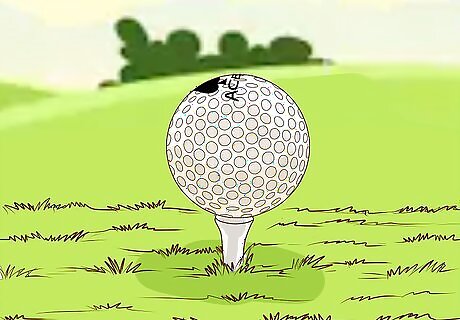
Point the logo on your ball up and outwards for help guiding your swing. A common cause of a slice is swinging your club in an outside-in trajectory. If the cause of your slice is the outside-in path of your swing, angling the logo on the golf ball so that it points outwards can serve as a helpful visual reminder to swing your club in an inside-out direction. An outside-in trajectory is when your club moves towards your body during the downswing. This swing trajectory causes the clubface to hit the ball on its side, which makes the ball spin. This spin then causes the ball to curve to the right as it flies.
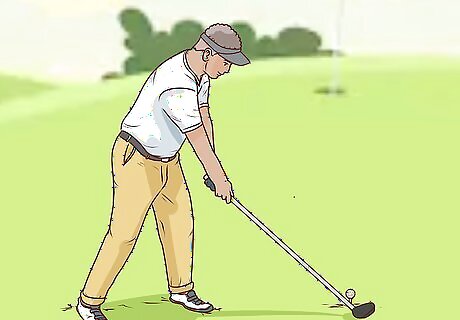
Position your back foot behind your front foot to fix your swing. As mentioned above, swinging your club along an outside-in trajectory is the most common cause of a slice. Moving your back foot back slightly is another technique you can use to help yourself swing your club down along an inside-out path. Position your feet so that they are approximately shoulder-width apart. Adjust your footing in small increments until you see a consistent change in the pattern of your golf ball’s flight path.
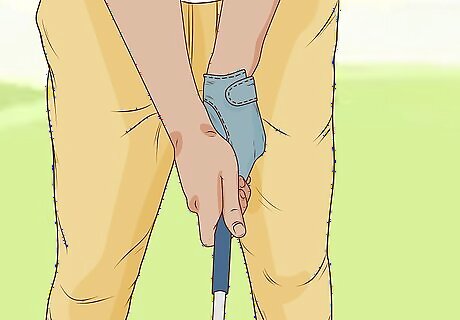
Reposition your left hand if you want to fix your grip. If your left hand is too far underneath the club when you grip it, the angle of the clubface will be angled outward, causing your ball to curve to the right after you hit it. To fix your grip, hold the driver so that the club head is resting on the ground. Then rotate your left hand counterclockwise so that, when you look down, you can see three knuckles on your left hand. The bottom tip of the “V” formed by your left index finger and thumb should point towards your right shoulder. If you are a left-handed golfer, reverse these instructions.
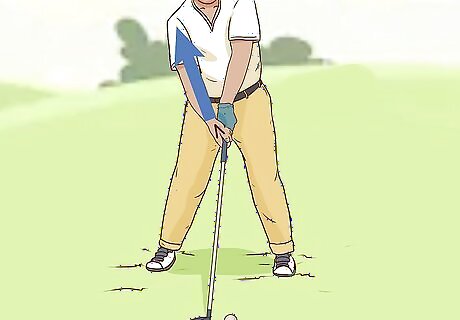
Point the “V” formed by your right hand towards your right shoulder. When you grip your golf club, the “V” formed by the index finger and thumb on your right hand should be in the same position as the “V” formed by your left hand. Your right hand grip should be just below your left hand. Again, left-hand golfers should reverse this step.
Adjusting Your Swing

Aim straight, rather than to the left, to hit a straight shot. Visualize a bright and thick red line running from your position to the target to help yourself hit a straight shot. Many golfers who frequently slice their drives start to aim to the left of where they want their ball to land to compensate for the rightward curve of their drives. This adjustment, however, can make a slice even worse because it exaggerates the outside-in trajectory of your swing, which is a common cause of a slice.
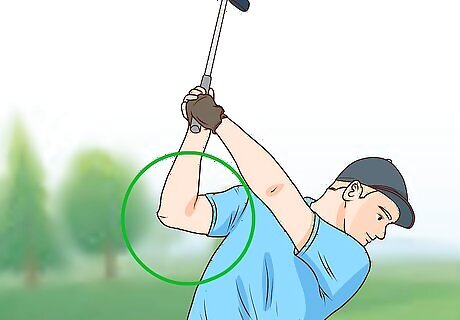
Keep your right elbow tucked in as you swing back your club. Golfers that frequently slice their drives tend to throw their elbows away from their body as they swing back their club. To train yourself to keep your elbows tucked in during your backswing, hold a small towel between your elbow and body when you practice driving. Outstretching your elbows pushes the club away from you, which then forces you to pull it in toward your body during your downswing. This results in an outside-in swing path, which can cause a slice.
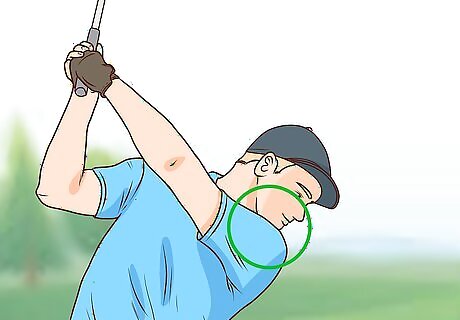
Swing your club back until your left shoulder is under your chin. At the top of your backswing your club should be at a 45-degree angle, with the clubhead pointing toward your target. Swinging too far back can throw you off balance and cause you to hit your ball at an angle, resulting in a slice. Not swinging back far enough, on the other hand, can deprive your downswing of the power and distance you want.

Transfer your body weight to your front foot during your downswing. During your backswing, you should transfer your body weight to your back foot, but if you don’t transfer your weight to your front foot as you swing down at the ball, your club will likely follow an outside-in swing trajectory, resulting in a slice. To train yourself to shift your weight to your front foot, place a golf bag right next to your front foot. As you swing your club down, your thigh should come into contact with your bag.

Hit the ball with a square clubface to straighten the ball’s flight. Striking the ball with an open clubface, or with the clubface angled outward, is a common cause of a slice. To hit the ball with a square clubface, visualize the flight path you want your ball to take as a line. Then practice hitting the ball with the clubface perpendicular to this line.




















Comments
0 comment